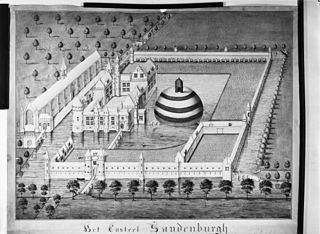
The Hook and Cod wars comprise a series of wars and battles in the County of Holland between 1350 and 1490. Most of these wars were fought over who should hold the title of "Count of Holland". The Cod faction generally consisted of the more progressive cities of Holland. The Hook faction consisted for a large part of the conservative noblemen.
John II was Count of Hainaut, Holland, and Zeeland.

William I, Duke of Bavaria-Straubing, was the second son of Emperor Louis IV and Margaret II of Hainaut. He was also known as William V, Count of Holland, as William III, Count of Hainaut and as William IV, Count of Zeeland.

The Battle of Zwartewaal was a decisive naval battle during the Hook and Cod wars.

Dirk III van Brederode was lord of Brederode.

Wolfert VI of Borselen was stadtholder of Holland, Friesland, and Zeeland, Admiral of the Netherlands outside Flanders, and Lord of Veere.

John II, Lord of Polanen was Lord of Polanen, Lord of De Lek and Lord of Breda.

Machteld van Voorne was Lady of Voorne, Monschau and Valkenburg, and burgrave of Zeeland. During the Hook and Cod wars she was an important ally of Count William V of Holland.

Zandenburg was a famous castle just south of Veere. Nothing remains of it, except some foundations below ground level.

Wolfert III van Borselen was Lord of Veere and Zandenburg.

Floris I van Haamstede was Lord of Haamstede Castle on Schouwen, and of several other areas in Zeeland, Netherlands.

Jan II van Haamstede was lord of Haamstede and Haamstede Castle.

Wolfert II van Borselen was lord of Veere and Zandenburg.

Moermond Castle is a castle in Renesse on Schouwen-Duiveland.

Wolfert I van Borselen was lord of Zandenburg and Polsbroek and regent for John I, Count of Holland.

Nicolas, Claes or Klaas van Borselen was a younger son of Wolfert I van Borselen. He founded the Van Borselen branch later known as Van Brigdamme.

Sint-Maartensdijk Castle was a castle with a rich history. Except for a part of the moats nothing remains of it.

Floris I van BorselenFlorens de Bersalia was lord of Sint-Maartensdijk and Sint-Maartensdijk Castle, the count's lieutenant in Zeeland and keeper of the seal of Holland.
The siege of Geertruidenberg (1351–1352) was a long siege of Geertruidenberg Castle during the first of the Hook and Cod wars.

The siege of Zierikzee (1351) took place during the first of the Hook and Cod wars.

















